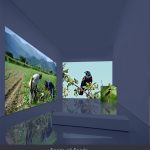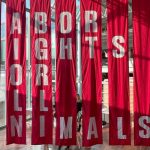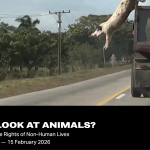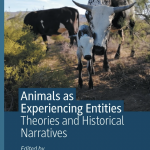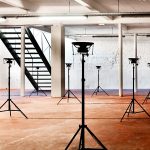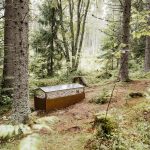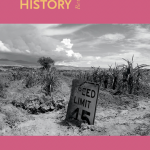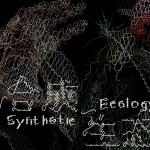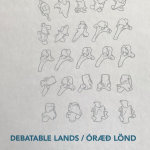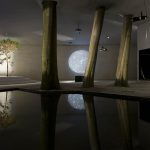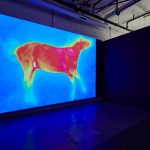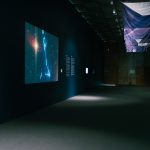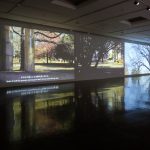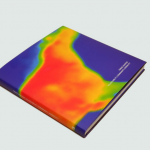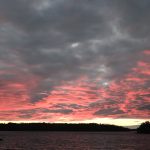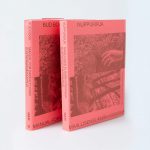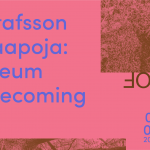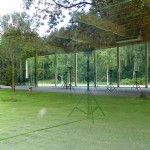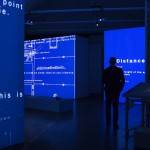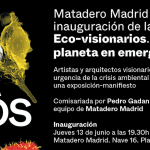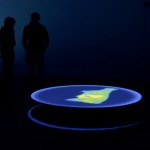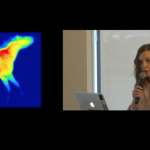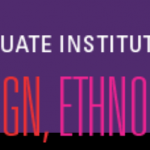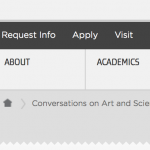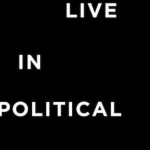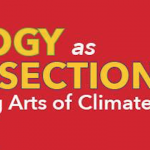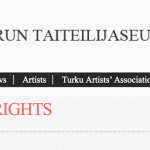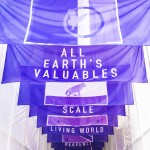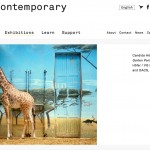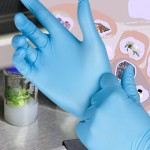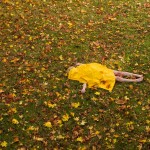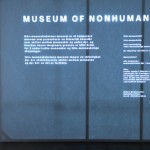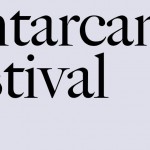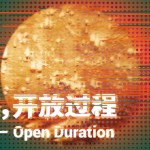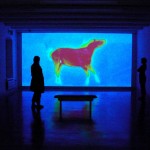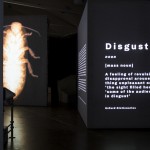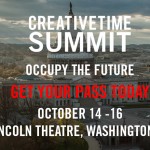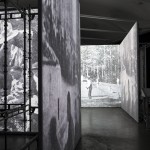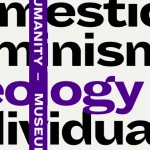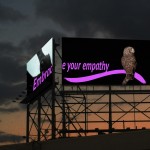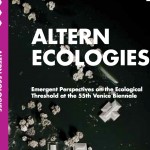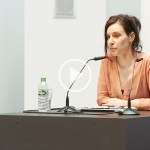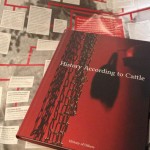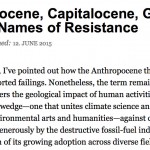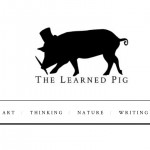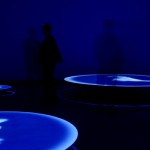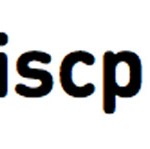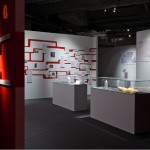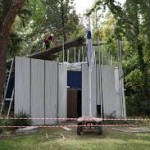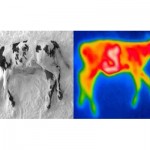Haastattelu, Toisten Puolue (2011)
Aleksi Neuvonen ja Terike Haapoja
Terike Haapoja: Kun nyt ajatellaan, että on olemassa perusoikeuksia jotka kuuluvat kaikille, niin tämä “kaikille” on itse asiassa aika rajallinen joukko. Eri ihmisryhmienkin perusoikeuksia on rajattu eri yhteyksissä, mutta kysymys toisten lajien perusoikeuksista on siellä keskiössä. Ajatus siitä, että heillä olisi lakiin kirjttuj perusoikeuksia on aika vieras meidän laindäädännöllemme.
Aleksi Neuvonen: Varmasti ihan historiallisesti on ajateltu että oikeuksien haltijan pitäisi olla joku joka on kasvnut siihen kulttuuriin tai voinut olla alusta saakka sopimassa siitä. Ja jos on kasvanut kulttuuriin voisi ajatella että että on jo ollut sopimassa sitä, ikään kuin ainoa sopimus jota on ollut itse tekemässä on juuri tämä. Vastaavalla tavalla käsittääkseni historiallisesti on ollut niin, että ulkomaalaisilla tai muualta tulevialla muukalaisilla ei ole ollut samoja oikeuksia, koska he eivät ole olleet osa sitä samaa yhteisöä, kasvaneet niihin sopimuksiin ja normeihin. Tässä mielessä on aina olemassa odotus siitä että henkilölle on kerrottu alusta asti mitkä ovat hänen oikeutensa ja velvollisuutensa.
TH: Jos nyt puhutaan heistä, siis toisista lajeist, niin tähänhän sisältyy ajatus siitä, että oikeudet ja velvollisuudet kulkevat käsi kädessä, eli että ei voi olla oikeuksia jos ei ole kykenevä tekemään sopimuksia. Mutta näinhän se ei ole kaikkien ihmistenkään kanssa.
AN: Ei varmasti olekaan näin, mutta perinteisesti on ajateltu että prototyyppi-ihminen on sellainen jok pystyy tietoisesti tunnistamaan velvollisuudet jotka tulevat sopimuksen vastakauppana: pystyy mieltämään mikä on hänelle noin yleisesti hyvä, pystyy kommunikoiman sen ulospäin. Sitten ikään kuin joisskin tilanteissa sitä on venytetty ikään kuin erikoistapauksena esimerkiksi lapsiin tai sairaisiin tai ihmisiin joilla on väliaikaisesti sellainen tilanne etteivät he itse pysty tätä asiaa käsittelemään. Mutta niissä on aina kuitenkin lähdetty siitä, että niissä on se ihmisen potentiaali, jolla on kyky sopia ja tunnistaa omat velvollisuutensa.
TH: Näetkö että tätä potentiaalia sopimusten tekemiseen voisi ajatella lajien välisenä?
AN: Luulen, että silloin oikeudet ja velvollisuudet -asetelma on pakko hylätä. Silloin pitää lähteä yhteisen hyvinvoinnin tai kaikkien huomioimisesta – jonkinlaisesta toisenlaisesta asetelmasta kuin siitä että meillä on joku tietynlainen olioluokka, jossa on essentialistinen ominaisuus nimeltä yhteisöönkuuluva ihminen, ja lähteä miettimään maailman kalustusta eri tavalla. Ehkä mieltää sitä olemisen ja läsnäolon ja muiden tällaisten asioiden kautta, eikä niin että se on tietynlainen yksilö, jolla on tietyt ominaisuudet ja tietty potentiaali juuri tähän oikeuksien ja velvollisuuksien sopimiseen.
TH: Ihmisen potentiaali sisältää ajatuksen siitä, että perusihmisyyteen kuuluu kyky artikuloida omat tarpeensa. Tässä tietenkin puhutaan kielestä, siis ihmisen kielestä tai kyvystä ihmiselle ominaiseen käsitteelliseen kieleen. Mutta on toki muitakin tapoja artikuloida tarpeitaan kuin kieli.
AN: Kyllähän meillä on ollut historiallisesti pyrkimys todistaa ihmisen erityisyys ja ainutlaatuisuus, ja ehkä ainakin viimeiset sadat vuodet erityisyys on liittynyt juuri kieleen, ihmiseen kielellisyyteen kykenevänä yksilönä joka pystyy perustelemaan omat tarpeensa. Ihmistä on ajateltu paljon juuri kognitiivisten kapasiteettien kautta. Sitä mukaa kun ymmärrys heistä toisista on parantunut, käsitys ihmisen erityisyydesta on varmasti myös muuttunut. Ehkä aikaisemmin kuviteltiin että kaikki muukin ihmisen kokemuksessa olisi kielellistä tai liittyisi ihmismäisiin ominisuuksiin, mutta kun tietellinen ymmärrys muiden olioiden aistimaailmasta on kasvanut ollaan huomattu että samankaltaisuuksia on yllättävän paljon. Tässä ehkä kielellisyys ihmisen erityisominaisuutena on korostunut. Mutta tietenkin jo useita vuosikymmeniä on ollut selvää että monet lajit kykenevät jonkinalaiseen kielen käyttämiseen – vaikka samaan aikaan on kyseenalaistettu onko silläkään mitään väliä. Vaikka kyky kieleen, symbolifnktioihin ja muihin, olisikin jaettu ominaisuus, niin voidaan pohtia onko olemssa vielä perustavammanlaatuisia meitä ja heitä yhdistäviä asioita kuin kieli.
TH: Mitä nämä voisivat olla?
AN: Esimerkiksi kokemus, kivun kokemus, muiden läsnäolon tunteminen, nautinto. Sehän on kuitenkin pystytty osoittamaan että niin sanotut primitiiviset kokemykset ovat ihmiselle ja muille olioille yhteisäi. Ehkä juuri kytkeytyminen muuhun todellisuuteen erityyppisten olioiden kanssa, empatian kokeminen ja muut vastaavat asiat ovat juuri niitä, joiden kautta koemme olevamme ihmisiä. Ja jotka kytkeytyvät myös moraalisiin tuntemuksiin.
TH: Tästä näkökulmasta ei ole mahdotonta ajatella että vastavasti ihmisen moraalisuus liittyisi myös heihin. Olemassaolon kokemus ei kuitenkaan helposti rakennu järjestelmäksi.
AN: Se ei varmasti rakennu järjestelmäksi – mutta ei se välttämättä rakennu järjestelmäksi monella ihmiselläkään. Siinä mielessä moni asia, joka tunnistetaan moraaliseksi, voi ihmisellä olla ihan vastaavanlainen kuin heillä. Tämä totta kai riippuu siitä, minkälainen teoria moraalisen järjestelmän pohjaksi otetaan. Ja silloin pitää ehkä miettiä vielä tarkemmin että mikä on ihmiselle todella lopulta tärkeää jaa mitä ihminen oikesti pystyy kokemaan tietyssä tilanteessa, ja mikä vain liittyy siihen kuvaan mikä meillä on ihmisestä teoreettisena hyvin argumentoituna keskusteluna.
TH: Kieli myös rajaa yhteisöä. On vaikea edes puhua yhteiskunnasta niin että se käsittäisi heidät myös siihen osallisina. Yhteiskunta on jo sanana ihmistä kuvaava. Pitäisikö meidän muuttaa käsitteistöämme, jotta pystyisimme ylipäätään lähestymään tätä ongelmaa?
AN: Kyllä se varmasti käsitteistöönkin heijastuu, mutta ennen kaikkea tarvitaan muutosta itseymmärryksessä, ymmärrystä siitä mikä yhtälailla liikuttaa ihmisiä. Meillä on ylikorostunut ajatus siitä että rationaaliset prosessit tietynlainen kyky laskennallisesti päätellä mikä on oikein ja väärin ohjaavat ihmistä. Onko itse asiassa niin, että nämä ominaisuudet eivät ohjaaa ihmisenkään toimintaa, vaan ihmiset ohjautuvat aivan toisenlaisten asioiden kautta – ja kun ihmisen omakuva, kuva ihmisyydestä ja ihmisyhteisön toiminnast muuttuu, niin ehkä esiin voi tulla myös sellaisia käytäntöjä joissa on pakko alkaa käyttää toisenlaisia käsitteitäkin.
TH: Pidätkö mielekkäänä että heillä olisi jonkinlaisia lakiin kirjoitettuja perusoikeuksia?
AN: Kyllä varmasti, ainakin nykyistä paljon vahvemmin. On selvää että niitä pitäisi lakeihin kirjta, koska perustelut oikeuksien rajaamisesta pelkästään ihmisiä koskeviksi eivät ole kovin selkeitä tai yksioikoisesti perusteltavia. Yksi näkökulma on, halutaanko sen lin olevan selkeä ja yksioikoisesti perusteltavissa. Toisaalta voidaan ajatella miten ihmiset oikeasti kokevat esimerkiksi heidän kanssaan toimimisen, ja voi olla että siinä on tapahtumassa suuria muutoksia. Tällöin ihmisten perusymmärrys siitä, mitä laissa pitäisi kirjata voi myös muuttua. Eli moraali lain taustalla on muuttumassa.
TH: Eli laki seuraa kulttuurin perässä.
AN: Kyllä.
TH: Minkätyyppisäi lakimuutoksia olisi sitten tarpeen tehdä, tai minkälaisia perusoikeuksia heillä voisi olla?
AN: No tietenkin perusoikeuksia lähimpänä on jo tällä hetkellä yritykset siitä, että turhaa kipua ja kärsimystä pitää välttää. Tällinen pyrkimys kuitenkin monissa laeissa jo on. Ehkä siinä on alku sille mitä ruumiillinen koskemattomuus voi olla ja minkälaisia kivun välttämisen tilanteita voidaan määritellä. Toisaalta ihmisenkin osalta se riippuu pitkälti siitä, mihin ihminen itse antaa luvan. Ja se on aina jollakin tavalla kielellinen ilmaus. Seuraava osatekijä on sitten kysymys laajemmasa ruumiillisesta koskemattomuudesta: saako joku muu tuottaa minkäänlaista kipua, tai saako joku muu otta hengen toiselta.
TH: “Turha” kärsimys on sikäli kiinnostava, että siinä tarpeellisuus määrittyy täysin ihmisen tarpeiden näkökulmasta. Eli se mahdollistaa tilanteita joissa kärsimys on ihmiselle tarpeellinen mutta kärsijälle ei.
AN: Ihmisyhteisöjen hyötynäkökulma tuo toki rajat sille miten pitkälle kivun välttäminen menee. Pitkälti kuitenkin se, minkä katsotaan olevan oikein, johdetaan sitä mitä oikeasti tehdään ja toteutetaan.
Jos meillä on tilanteita joissa suuri joukko ihmisiä huomaa, että kivun tuottaminen heille ei ole millään tavalla välttämätöntä (esimerkiksi heitä ei tarvitse uhrata jumalilla tai voimme muuttaa ravintotottumuksiamme niin että tappaminen ei ole enää välttämätöntä), niin se muokkaa sitä minkä katsomme olevan oikein. Jolloin voi olla että syyt siihen että käytännöt ja sitä kautta arvot muuttuvat voivat olla jossakin aivan muualla kuin heidän periaatteellisessa oikeudessaan koskemattomuuteen.
TH: Tässä on mielenkiitoista ajatus siitä, että vapaus tuottaa moraalisuutta, että moraalisuus on mahdollinen vasta sellaisessa tilanteessa jossa on valinta.
AN: Näin.
TH: Jos ajatellaan heitä, niin tässä mielessä heillä ei myöskään ole sitä valinnan mahdollisuutta jota moraalisuus edellyttää.
AN: On selvää, että meidänkin vapauskäsitys on koko ajan muuttunut. Se, minkälaisiin asioihin olemme velvoitettuja syntymästämme tai mitä olemme itse valinneet riippuu kulttuurisista konventioista. Vapaudesta itsestään puhuminen on tuntunut lisääntyneen muutaman sukupolven aikana paljon. Voi olla, että vapaus ei ollut meilläkään kovin totaalinen asia ennen kuin pystyttiin historiallisesti vertaamaan sitä joidenkin toisten vähempiin vapauksiin. Vapaus oli jossakin vaiheessa ehkä vielä enemmän ryhmien kuin yksilöiden vapautta. Voi olla että tietyille kansakunnille vapaus oli nimenomaan sitä, että olemme vapaita toisen hallitsijan ikeestä, mutta yksilön vapautta ei osattu niinäkän kuvitella. Ei nähty mitä minun vapaus olisi, koska meidän vapautemme oli olennaisempi.
TH: Individualismi määrittelee tosiaan voimakkaasti meidän tapojamme. Lähtien jo siitä, että meidän on helpompi ajatella oikeuksien ja vapauksien kuulumista sellaisille olennoille jotka meidän on helppo mieltää yksilöiksi, ihmisen kaltaiseksi. Ympäristökriisin myötä on tullut vahvasti esiin tietynlainen yhteisökeskeisyys, joka on ehkä ainoa tapa ajatella maailmaamme, vaikka se saattaa tuottaa yllättäviä haasteita jo kansainvälisellä tasolla.
AN: Siinä on kyse kahdenlaisesta merkittävästä muutoksesta. Toinen voi olla kysymys siitä, kenen me ajattelemme muodostavan “meidät”. Tässä historiallinen kehitys on ollut että jossakin vaiheessa “me” käsitettiin ihmisiksi, jotka ovat vahvasti läsnä, välitön yhteisö. Jossakin vaiheessa on keksitty että “me” voi olla myös kansakunta, ja ehkä seuraavaksi ollaan keksimässä, että “me” käsittää koko tällä planeetalla asuvat ainakin saman lajin edustajat. Siinä mielessä ihmisen itseymmärrykseen liittyvä kysymys siitä keitä “me” olemme on liikkumassa. Toinen kysymys on se, että voimmeko todeta että meillä ei ole muuta mahdollisuutta kuin ymmärtää kytkeytymisemme toisiimme ja asettaa rajoituksia sille mitä me yksilöinä saadaan tehdä. Tämä on toinen suunta, jonka kautta vasrmasti syntyy rakenteita joiden kautta ihminen näkee mielekkyyttä enemmän “meidän” kuin “minun” kautta asian ajattelemisessa. Ehkä kolmantena kysymyksenä on kokemuksellisempi ajatus oman olemassaolon kytkeytymisestä muihin, jolloin “me” tarkoittaa vahvasti läsnäoloa. Sitä että “me” käsittää ne jotka ovat läsnä. Tällöin se kuka kuuluu heihin ja meihin voi muuttua hyvin toisenlaiseksi. Me voi olla kuka tahansa johon koetaan empatiaa tai jonka voi nähdä ja kokea ja jota voi koskettaa, ja joka reagoi suoraan omiin tekoihin. Sitä kautta ajatellen “me” on jotakin hyvin orgaanista, missä yksilö on koko ajan vuorovaikutuksessa toisten kanssa, ja sen tunnetilat ikään kuin seuraavat muiden tunnetiloja.
TH: Kaikki samankaltaisuuteen perustuva yhteisöajattelu sulkee väistämättä joitakin ulos. Olemukselliseen eroon keskittyminen sulkee ulos tällaisen läsnäoloon perustuvan tavan ajatella yhteisöä. Mutta kun ajatellaan että yhteiskuntamme on nyt rakentunut urbaaneiksi keskittymiksi joissa heidän mukana olemisensa on eri tavoilla etäännytetty, niin nousee kysymys vaatisiko kuvailemasi läsnäolon tai yhteisyyden kokemus kokonaan erilaista yhteiskuntarakennetta?
AN: Varmaan se läsnäolon kokemus syntyisi eri tilanteissa, jolloin se pystyisi kantamaan toisiin tilanteisiin. Että he, jotka ovat kanssamme läsnä tässä tilanteessa voivat olla aivan toisenlaisia jossain toisessa ympäristössä. Tämä tarkoittaa vain sitä että ihmisillä on itseymmärrys siitä, että he eivät ole yksilö joka kulkee tilanteesta toiseen ilman että se tilanne vaikuttaa siihen minkälaisia he itse ovat. Omaa tilannetta voidaan katsoa kokonaisuutena, jossa on erilaisia vuorovaikutuksia. Eli että voisi syntyä sellainen ymmärrys että että olennaisia eivät ole tilanteessa olevat yksilöt, vaan vuorovaikutkset ja kokemukset siinä tilanteessa. Tällöin olennaista ei olekaan enää mitä yksiliden ominaisuudet ovat, vaan kokonaisuus.
TH: Nykyinen poliittinen yhteiskuntahan lähtee hyvin erilaisista lähtökohdista. On erilaisia intressirhmiä joita sitten edustetaan. Jos laajennettaisiin yhteisön käsite kattamaan myös heidät ja heidän intressinsä, nousee kysymys siitä miten saada tietoa heidän intresseistään ja tarpeistaan.
AN: Tämä on myös tiedollinen kysymys. Tiedämme yleisellä tasolla mitä kipu tai mielihyvä ovat. Toisaalta ymmärrämme entistä paremmin sekä meidän että heidän käyttäytymisen ohjautuvan myös positiivisen palautteen ohjaaminen. Siinä miten ymmärrämme oppimista ja kanssakäymistä ollaan tultu pitkä matka muutamassa vuosikymmenessä.
TH: Voisiko yksi aloite olla, että jo peruskoulussa opetetaan malleja komunikoida heidän kanssaan? Että koulu olisi lajien välinen.
AN: Ehdottomasti kyllä. Suurin osa ihmislapsista kokevat heidät joka tapauksessa kovin kiinnostavina, ja heidän kykynsä empatiaan ja samankaltaisuuden kokemiseen on hyvin vahva. Toisaalta sitä ei ole systemaattisesti vahvistettu, tai on vahvostettu toiseen suuntaan: esimerkiksi joissain päin maailmaa on maataloilla sijaitsevia sisäoppilaitoksia, joissa oppilaat ovat vahvasti mukana ruoantuotannossa.
TH: Tulee mieleen että voisi perustaa lajienvälisen kodin lapsille ja muille eläimille: rakentaa uudenlaista yhteisöä.
AN: Siinä korostuisi varmasti myös kyky spontaaniin mallioppimiseen, kykyyn omaksua erilaisia kohellisia malleja toisenlaisista käytännöistä, ja sitä kautta kyetä luomaan vastavuoroista kommunikaatiota toisella tavalla. Läsnäolon ottaminen keskeiseksi asiaksi siinä miten yhteiskuntaa rakennetaan voi olla tässä avainasemassa.
TH: Seuraava kysymys koskisi sitä, millä tavalla heitä sitten voisi edustaa yhteisessä päätöksenteossa. Minkälainen rakenne voisi mahdollistaa heidän äänensä tulemisen kuulluksi?
AN: Historiassa on toki ollit erilaisia malleja siitä kuka saa edustaa ketä ja minkälainen samankaltaisuus tällä pitäisi olla suhteessa edustettavaan, ja aina kuitenkin lopputuloksena on, että edustajat muuttuvat pikkuhiljaa erilaisiksi kuin edustamansa. Tässä tietenkin se suunta on toisenlainen. Yhtä hyvin voidaan kuvitella että joku meistä edustaa heitä, mikä ei ole ennennäkemätöntä ihmiskunnan historiassa. Vastaavasti voidaan miettiä, mikä tulevaisuus samankaltaisuuden oletuksella nykyisessä järjestelmässä on, kun se on koko ajan muuttunut entistä vaikeammaksi, ja asiat joissa pitäisi edustaa toista ovat muuttuneet monenkirjavammiksi. Tällöin edustavuuden prustaminen samanlaisuuteen tai asuinseutuun on muuttunut paljon monimutkaisemmaksi kysymykseksi kuin aikaisemmin. Samalla tavalla intressiryhmät ovat muuttuneet vaikeammaksi asiaksi hahmottaa. Yhä suurempi joukko meistä ei koe tarvitsevansa kovin merkittäviä omien intressien ajajia, vaan riittää, että on tietty perussopimus siitä miten asiat toimivat.
TH: Näetkö vaihtoehjota edustukselliselle rakenteelle?
AN: Näen, mutta en kovin selkeästi. On lohdullista ajatella, että nykyinenkin edustuksellinen rakenne on syntynyt paljolti kokeilemalla ja sattumalta, sitä ei kukaan ole etukäteen todistanut toimivaksi ja parhaaksi mahdolliseksi. On vain lähdetty miettimään eri vaihtoehtoja, ja päädytty johonkin joka on sitten sopinut kaikille läsnäoleville. Yhtä hyvin voi olla, että meillä on tulevaisuudessa tilanteita, joissa joko osa meistä kokee että heitä ei tarvitse edustaa, että he ovat riittävästi omillaan ja suurimmassa osassa tilanteita riittää jokin perussopimus jolloin edustajia tarvitaan vain erikoistilanteissa. Tai sitten syntyy jokin tapa, jolla voidaan vaikuttaa suoremmin, muodostaa tilapäisiä yhteisiä näkemyksiä. Mutta se tarkoittaa varmasti aina sitä, että tehdään rajaus siitä mistä asioista pitää olla yhteinen mielipide, ja mistä päätetään.
TH: Aikaisemmissa keskusteluissa on tullut esille ajatus siitä, että koska emme pysty tekemään heidän kanssaan sopimuksia, meidän tulisi jättää heidät rauhaan. Rauhaan jättäminen olisi tällöin tällainen perusoikeus. Tämä on ristiriidassa läsnäolon kysymyksen kanssa.
AN: Luulen, että jotta päästään edes rauhaan jättämiseen, niin se edellyttää jonkinlaista läsnäoloa. Niin kuin aikaisemmin sanoin, uudet tekemisen ja toimimisen tavat, yhdessä olemisen tavat, ohjaavat tähän rauhaan jättämisen päätökseen. Pelkkänä intellektuaalina prosessina rauhaan jättäminen ei onnistu. Siinä pitää kuitenkin varmasti olla halua rakentaa siltaa meidän ja heidän välillee, kokea että se on mahdollista ja mielekästä ja erityistä. Niin kuin se onkin tietenkin, suurimpia arvoituksia mitä voi kuvitella.
TH: Tässä tullaan toisen puolesta olemiseen ja tekemiseen toisenlaista kautta kuin intressiryhmien ajatuksen kautta. Syntyy ajatus altruistisesta politiikasta, jossa oman itsensä puolesta puhuminen olisi kielletty, ja pitäisi aina yrittää puhua toisen puolesta.
AN: Kyllä se tarkoittaa sitä, että on oltava vahva kokemus siitä että toisen kanssa läsnäoleminen on jotakin hyvin todellista samalla tavalla kuin nyt koetaan yksilöllisyys ja yksilön oikeudet.
TH: Jos yritetään miettiä sellaista utopiaa meillä olisi jollakin tavalla – mikä ikinä se tapa olisikaan – kyky huomioida heidän intressejään ja kommunikoida heiädn kanssaan, tavalla tai toisella kuunnella heitä paremmin. Jos meillä olisi jonkinlainen lainsäädännöllinen ja poliittinen rakenne, joka mahdollistaisi heidän osallistumisensa tähän yhteiseen yhteisöön sen täysivaltaisina jäseninä. Että heillä olisi esimerkiksi perusoikeuksia kuten oikeus fyysiseen koskemattomuuteen. Miten tämä muuttaisi meidän yhteiskuntaamme konkreettisesti?
AN: Tietenkin se tarkoittaa, että tietty osa meidän historiasta muuttuisi totaalisesti historiaksi, koska sillä ei olisi enää mitään eläviä toteutumismuotoja. Varmasti osa maataloudesta ja ruoantuotannosta muuttuisi historiaksi. Varmasti meidän pitäisi myös sopia että jotkut käytännöt on sovittu muunlaisten sääntöjen aikana ja todeta että esimerkiksi emme voi raivata jotakin uutta aluetta käyttöön samalla tavalla vapaasti kuin ennen. Kyllä se tarkoittaisi myös sen tunnustamista että aikaisemmin on toimittu eri säännöillä, ja siitä johtuvia myönnytyksiä ja luvanantamisia. Eli se tarkoittaisi jatkuvaa tulkitsemista, muta sellaista yhetiskunnassa on aikaisemminkin ollut, samoin kuin erilaisten osallisuuksien piirien laajenemista. Se on vuokymmenten tai -satojen matka ennen kun näistä edellisten aikojen jäänteistä on päästy ohi. Konkreettisesti se tarkoittaisi varmasti myös ihmisten väkimääräisen ekspansion lopettamista. Ja isoa pohdintaa siitä mitä tehdään heille jotka ovat olleet tuotantokäytössä. Se vaatisi jonkinlaista vapauttamisjärjestelyä, joka olisi varmasti samalla tavalla monimutkainen järjestely kuin joskus aikaisemmin valtionrajojen piirtäminen on ollut. Se tarkoittaisi varmasti että me joituisimme eri tilanteissa kollektiivisesti selittämään itsellemme omaa epätäydellisyyttämme, koska uusi tilanne ei olisi mitenkän ylhäältä annettu vaan vaatisi jatkuvaa tulkintaa siitä miksi emme vieläkään toimi täydellisesti tai kaikkien hyvinvoinia huomioon ottaen. Varmasti myös teknologista kehittämistä ja yysien käytäntöjen vähittäistä soveltamista.
TH: Vhavat ihmisoikeudet tavallaan myös estävät heidän oikeuksiensa toteutumista. Väestönkasvu on hyvä esimerkki, ja YK:n ihmisoikeusjulistukseen kirjattu oikeus naisten päättää itse kuinka monta lasta hän saa. Tämä ei tietnkään toteudu kaikialla, mutta on kuitenkin ideaali. Jos huomioidaan heidän oikeuksiaan ja tarpeitaan, niin se saattaa väistämättä tarkoittaa sitä, että meidän pitää antaa periksi omista oikeuksistamme.
AN: Se voi tarkoittaa, että joissakin tilanteissa on pakko miettiä kollektiivisempia tapoja tulkita sitä mihin kenelläkin on oikeus. Toisaalta se voi tarkoittaa, että joissakin tilanteissa on aika villi luonnotila. Ja se taas voi olla emotionaalisesti ristiritainen ajatus, kun se saattaa tarkoittaa että joskus toinen syö toisen, vaikka me itse olemme oppineet että emme hyväksy sitä itseltämme. Tämä varmasti tarkoittaa vaiheittaista, asteittaista tilannetta, jossa pikkuhiljaa heidän läsnäolonsa ja siihen liittyvät oikeudet ja velvollisuudet etenevät. Se ehkä tapahtuu vähitellen ryhmä kerralleen, ja voi olla että se ei ole kovon nopea prosessi.
TH: Jos meillä olisi Toisten Puolue, joka jollakin tavalla pyrkii puhumaan oikeudettomien puolesta, mitkä olisivat sen keskeiset periaatteet?
AN: Ensimmäinen asia olisi ihmisten väkiluvun kasvun ja riistämisen pysäyttäminen tai hidastaminen. Väkiluvun kasvun konktrollointi luultavasti kontrolloisi myös heihin kohdistuvaa riistoa. Näihin kysymyksiin ratkaisun löytäminen olisi varmasti ensimmäisiä asioita. Seuraava olisi heidän läsnäolon ymmärtäminen. Se olisi kasvatuksen ja koulutuksen asia, ja samaan aikaan erilaisten resurssien uudelleen ajattelemista. Tämä ei koskisi ainoastaan ruoantuotantoa, vaan myös monia muita asioita, jotka vaativat luonnonvarojen käyttöä. Pikkuhiljaa näiden rakenteellisten kysymysten rinnalla voidaan sitten ehkä tieteenkin avulla päätyä määrittelemään mitä itse kullekin kuuluu. Missä ja miten meitä ja heitä voi laittaa samalla viivalle. Se voi olla tieteelliseen tutkimukseen perustuvaa päätöksentekoa, jossa käydään periaatteelisia keskusteluja ja eettisten suosituksten rakentamista. Ja sen jälkeen näiden suositusten kytkemistä muihin käytäntöihin.
TH: Mikä on tämän kaiken etu meille? Jos ajattelemme tätä utopiana, vaikka joillekin tämä saattaa näyttäytyä dystopiana. Miten me hyödymme tästä ihmisinä?
AN: Hyöty on varmasti kahdensuuntainen. Toinen on se, että meidän on pakko hakea nykyiselle yhteiskunnalle toisenlaista suuntaa joka tapauksessa, ja sille muutokselle pitää löytää mielekkäitä sisältöjä. Samalla tullaan ehkä ratkaisseeksi muitakin asioita, liittyen luonnonvarojen käyttöön ja ihmisen väestönkasvuun, jotka kapeastakin hyötynäkökulmasta tuleat vastaan. Toinen asia on, että tässä on kyse suuresta ihmeestä, joka voi olla meidän ja heidän välisen kommunkaation kehittymistä ja siihen liittyvää läsnäolokokemusta johon liitty valtavia hyvän olon ja onnellisuuden kokemuksia. Tähän liittyy myös paremman itseymmärryksen rakentaminen sen seruauksena että hahmotetaan ettemme ole yksittäisiä aivoja vaan kytköksissä toisiin. Tämän kehittäminen on varmasti suurin askel.
Aleksi Neuvonen on Demos Helsingin toinen perustaja. Hänen työnsä keskittyy yhteiskuntien ja organisaatioiden muutoksen (ja muuttumattomuuden) ymmärtämiseen. Tulevaisuudentutkijana Aleksia kiinnostavat sekä teknologia että ihmisten käyttäytyminen. Aleksi on ollut luomassa Demos Helsingin näkemystä yhteiskunnallisesta muutoksesta, jota on sovellettu käytännössä kaikissa Demos Helsingin tutkimusraporteissa. Makrotason ymmärrys tulevaisuuden kehityskuluista yhdistyi startupien, yritysten ja kaupunkien yhdessä elävässä kaupunkiympäristössä tekemiin kokeiluihin Smart Retro -ohjelmassa. Tällä hetkellä Aleksi rakentaa yhteiskunnallista visiota kestävästä hyvinvoinnista Sitran kanssa toteutettavassa Seuraava Erä -ohjelmassa. Aleksi Neuvonen on toiminut pitkään hallituksessa maailman johtaviin rauhanvälitysorganisaatioihin kuuluvun CMI Martti Ahtisaari Centerissä ja ekokauppaketju Ruohonjuuressa. Hän viimeistelee parhaillaan väitöskirjaa Tampereen teknillisessä yliopistossa ja hollantilaisessa Radboud Universityssä.
